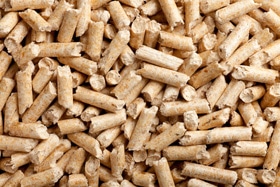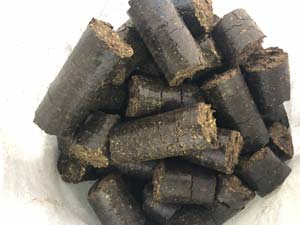
Peat Pellets from Sphagnum Moss
Peat Pellets Made from Sphagnum Peat Moss
![]() Harvesting sphagnum and peat moss from bogs and fens around the world to be converted into peat pellets from sphagnum moss is a controversial practice since it is claimed harvesting peat and sphagnum moss contributes towards climate change.
Harvesting sphagnum and peat moss from bogs and fens around the world to be converted into peat pellets from sphagnum moss is a controversial practice since it is claimed harvesting peat and sphagnum moss contributes towards climate change.
Renewable energy technologies play an important role in modern industry and social livelihood, and their variety is huge. In particular, solar and wind energy are as wide spread as traditional fuels in contrast to biomass energy, which is a prerogative of certain countries, engaged in the production and trade of peat pellets from sphagnum moss.
Marsh lands and bogs account for less than 5% of the earth’s surface. Yet they are a huge storage unit for CO2 carbon dioxide. However, when harvested, this trapped carbon which has been sequestered in the ground for thousand’s of years, is released back into the atmosphere, contributing to global warming.

When harvested from bogs and fens, it quickly dries out turning it into horticultural amendments for gardeners and growers to improve drainage and retain moisture in soils especially when growing potted plants indoors.
Many of the bagged planting soils and mixes for containers you can buy from your local garden centre contain peat moss and soil mixed together.
Also, dried sphagnum moss is a popular choice as a decorative top dressing in floral arrangements as well as in craft projects since it holds the shape when making up frame-built floral displays. When used in container planting it can enhance the finished look of a plant pot, hanging basket, or even terrarium by filling up the empty space around pants.
Why Not Use Peat Pellets
Peat based products have been used as a type of fossil fuel for burning for hundreds of years if not millennia. Peat moss, which is a genus of Sphagnum, is made into fuel pellets for sale by large companies which clear and cut large swaths of the peat bogs to reach the moss, ruining the habitats for native insects, birds and plants. To date, peat pellets from sphagnum moss are recognized as biofuels of standard cylindrical shape used for heating of households.
As prices on oil and gas get higher, the demand on fuel peat pellets increases, especially in the European countries, where their Eco-friendly features are highly appreciated.
Besides cheaper low cost prices, ecological compatibility is the most valuable advantage of this type of renewable energy. During combustion of the peat pellets, the amount of carbon dioxide gas is equal to its absorbed amount during the growth of the tree.
To be more precise, pellets might be made of peat, wood or agricultural waste. In this case, one can get familiar with such items as peat pellets, biomass wood pellets or sawdust pellets that are united under the term of “fuel pellets”. In addition, one more benefit might be defined, which features practical usage of timber factories’ run-off. It appears to be a basic material for pellets’ production.
Speaking of the production process, it is important to mention a pressing method. Initially, wood or peat wastes are broken to pieces and milled. Then this mass is dried out and put into pellet pressing machine, where it forms pellets according to the national standards. Indeed, most of the exporting states follow their own certificates of standard and quality. In this context, it is appropriate to mention the United States, Germany, Austria, and the United Kingdom as major players on the market of fuel pellets.
On the contrary, Ukraine and Russia are also significant producers, but these countries do not have any standards established by now and, therefore, they follow German example. The most common items of such certificates point out pellets’ diameter ( 6,8 or 10 mm ), moisture ( 8 – 12% ), ash-content ( 0,5 – 1,5% ), production capacity ( 650 – 750 kg ) and thermal value ( 4100 – 4300 Kkal/kg ).
Being environmentally friendly type of energy, fuel peat pellets gained big popularity in the European Union, where installation of peat pellet burning stoves and boilers is supported on national level, including government grants. In many countries, focused on renewable resources advancement, nearly 2/3 of private households and countryside cottages are heated by wood or peat pellets.
Germany is a vivid example of how fuel pellets have influenced on states policy, which nowadays encourages both production and import of the product, as well as an establishment of power stations in the nearest future based on fuel pellets heating. Last year German producers have reached the point of 1,9 million pellets; 1,4 million were consumed within the country.










i think you should clarify what you mean by “Being environmentally friendly type of energy”, “eco-friendly features”, and “renewable energy”.
Peat is literally a fossil fuel (“A fossil fuel is a hydrocarbon-containing material formed naturally in the Earth’s crust from the remains of dead plants” – source wikipedia 2023-03)
Peatland is one of the largest stores of carbon on the surface of the planet, draining (killing) bogs you release their carbon into the atmosphere, and again when you burn the peat. This is worse than using any other fossil fuel as you’re reducing their ability to absorb and store carbon, while releasing all the carbon they have stored into the atmosphere.
I personally don’t mind the use of fossil fuels, but your claims arent just wrong they are antithetical to the truth.
Shame on you for making such claims in the name of profiteering
Clearly you have misread and/or missunderstood the tutorial. Energetic pellets and briquettes can be made using solid biomass fuels such as wood, sawdust, grasses, straws, etc. Peat being a form of compressed dead vegitation can be regarded as an additive and mixed with many of these woody raw materials or commonly used as a soil conditioner. The tutorial discusses the use of Sphagnum Moss to create fuel peat based pellets. There are many varieties of Sphagnum moss, also known as peat moss, bog moss, etc, which can be used for the production of pellets for heating or the production of gases such as ethylene, or methanol as biofuels. The use of the terms: “Being environmentally friendly type of energy”, “eco-friendly features”, and “renewable energy” are all relevant in the context of the tutorial. As compared to burning raw coal, peat based fuel pellets are indeed enviromental friendly emitting lower emissions and greenhouse gases.
Sphagnum moss has a high carbon content making it ideal material for pellet and briquette production. These dense, long-burning briquettes/pellets can be used to heat homes or for cooking stoves instead off wood or coal or oil. But sphagnum peat moss is high in acidity and has the ability to absorb water so using it a fuel is not always a good idea. While sphagnum peat moss is technically a renewable resource, taking long period to grow, so once the peat moss wetlands are drained and damaged, they may never recover. Kimberly Richardson